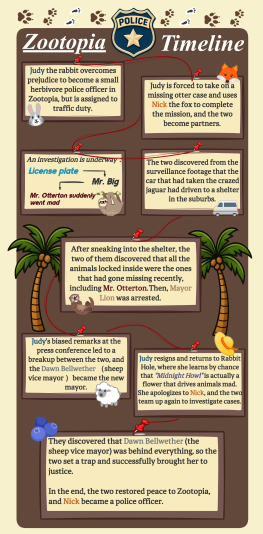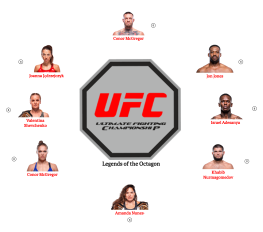
Latin America: An Overview of History, Culture, and Society
1 Report
This mind map provides a comprehensive overview of Latin America's history, culture, and society. It explores the region's diverse geography, from the Amazon rainforests to Patagonia's icy plains, and its rich ethnic tapestry, including mestizos, indigenous peoples, and Afro-descendants. The historical narrative spans from the colonial era, marked by European conquests and indigenous civilizations, to the independence movements of the 19th century. The economic landscape is traced from early extractive systems to contemporary mixed economies. Social issues, political dynamics, and cultural influences, such as language and music, are also highlighted, offering a holistic view of Latin America's complexities.
Related Recommendations
Other works by the author
Outline/Content
See more
Geography and Diversity
Latin America spans a range of climates, from tropical rainforests in the Amazon Basin to deserts in northern Mexico and Argentina, as well as the icy plains of Patagonia.
It is home to diverse ethnic groups, including mestizos (mixed indigenous and European descent), indigenous peoples, Afro-descendants, and European-descended populations.
The region also contains several major cities like São Paulo, Mexico City, Buenos Aires, and Bogotá, which serve as cultural, economic, and political hubs.
Historical Background
Colonial Era (16th–18th centuries)
In the 15th and 16th centuries, Latin America was dominated by indigenous civilizations like the Aztec, Maya, Inca, and numerous other groups. However, with the arrival of Christopher Columbus in 1492 and the subsequent Spanish and Portuguese conquests, the region was gradually incorporated into European empires.
The Spanish Crown established colonies in the Americas, exploiting natural resources (especially silver and gold) and imposing a colonial system that relied on the forced labor of indigenous populations and African slaves.
Portugal controlled Brazil, where they established sugar plantations using enslaved Africans and indigenous labor.
The Catholic Church played a central role in the colonial experience, establishing missions and converting indigenous peoples, sometimes violently, to Christianity.
Independence Movements (Early 19th Century)
The 19th century saw a wave of independence movements inspired by the Enlightenment, revolutions in Europe, and the American and French Revolutions.
Leaders like Simón Bolívar (Venezuela, Colombia, Ecuador, Bolivia) and José de San Martín (Argentina, Chile, Peru) spearheaded revolutions across South America. By the early 1820s, most Latin American countries had gained independence from Spain, though Brazil’s independence came later (1822) and through a relatively peaceful process under the Portuguese crown.
Despite political liberation, the new nations faced internal divisions, lack of infrastructure, and the continuing dominance of elites who controlled land and power.
Post-Independence and the Rise of Dictatorships
After independence, Latin America struggled with political instability. Strongman dictatorships, military juntas, and caudillos (regional leaders) often replaced colonial monarchies.
The lack of unified political ideologies and the difficulty in establishing strong democracies meant that many countries experienced cycles of rebellion, civil war, and authoritarian regimes.
Economic Landscape
Early Economic Systems
During the colonial period, Latin America's economy was primarily extractive, focused on mining precious metals, and later on plantations that produced sugar, tobacco, and coffee.
Slavery was integral to the labor systems, especially in Brazil, the Caribbean, and parts of Central America.
Economic dependency on a few key exports, especially raw materials, left Latin American economies vulnerable to price fluctuations in the global market.
20th Century: Industrialization and Export Dependence
The early 20th century saw significant changes, with industrialization beginning in some countries, notably Mexico, Argentina, and Brazil. However, many Latin American countries remained largely dependent on the export of raw materials, including oil, minerals, and agricultural products.
Import substitution industrialization (ISI) became a popular policy from the 1930s to the 1970s, wherein countries sought to develop local industries and reduce dependence on foreign goods.
Despite ISI’s success in creating industrial bases in countries like Brazil and Argentina, the policies often led to high inflation, debt, and imbalances in the economy. By the 1980s, many countries faced severe economic crises.
Contemporary Economy
Today, the region is characterized by mixed economies, with some countries like Brazil, Mexico, and Argentina being major players in global markets, particularly in commodities (e.g., soybeans, oil, metals).
However, inequality remains a significant issue, with wealth often concentrated in the hands of a few. The informal economy (e.g., street vending, small businesses) is also widespread in many countries.
Globalization has brought both opportunities and challenges, as many countries have opened up to international trade, though some struggle with dependency on foreign markets and multinational corporations.
Social Issues and Inequality
Class, Race, and Inequality
Latin America has some of the highest levels of income inequality in the world. While a growing middle class exists in countries like Brazil and Mexico, significant portions of the population live in poverty.
Racial and ethnic inequalities are deeply entrenched in many countries. Afro-descendants, indigenous peoples, and women often face marginalization and exclusion from political and economic opportunities.
Indigenous populations, particularly in countries like Mexico, Guatemala, Bolivia, and Peru, continue to fight for land rights, political representation, and recognition of their cultural heritage.
Women in Latin America have made great strides in terms of legal rights, education, and workforce participation, but gender inequality remains, especially in rural areas.
Urbanization and Migration
Over the past few decades, Latin America has rapidly urbanized. Large cities like São Paulo, Buenos Aires, and Mexico City are among the largest in the world, but many people live in informal settlements or slums (e.g., favelas in Brazil, villas miserias in Argentina).
Rural-to-urban migration has increased, as people move in search of better job opportunities, education, and healthcare.
Migration to the United States has been a major issue for many Latin American countries, especially Mexico and Central America, with millions of people seeking better economic opportunities or fleeing violence and poverty.
Political Landscape
Authoritarianism and Military Dictatorships
Throughout the 20th century, many Latin American countries fell under authoritarian regimes, often with military backing. In the 1960s-1980s, countries like Chile (under Augusto Pinochet), Argentina (under Videla), and Brazil (under Médici) saw military juntas that ruled through violence, repression, and torture.
The Cold War played a significant role, as the United States often supported right-wing dictatorships in the region as a countermeasure against the spread of communism.
However, the 1980s and 1990s saw the gradual return to democracy in many countries, with authoritarian regimes transitioning to democratic governments. Notable transitions included the fall of Pinochet’s regime in Chile (1990), the return of democracy in Brazil (1985), and the end of military rule in Argentina (1983).
The Rise of Left-Wing Movements
In the late 20th and early 21st centuries, left-wing populist leaders like Hugo Chávez in Venezuela, Evo Morales in Bolivia, and Luiz Inácio Lula da Silva in Brazil rose to power, capitalizing on frustration with inequality, corruption, and neoliberal economic policies.
These leaders often emphasized national sovereignty, wealth redistribution, and anti-imperialist policies, though their governments were also criticized for authoritarian tendencies and for undermining democratic institutions.
In contrast, the political landscape of some countries, such as Colombia and Mexico, has been dominated by conservative or centrist governments, often supported by the U.S. due to the region's proximity and trade agreements (such as NAFTA).
Current Challenges
Many countries in Latin America still face struggles related to corruption, crime, political instability, and economic inequality.
The rise of populist leaders, both on the right and left, continues to shape the region's political dynamics, with social protests and calls for reform frequently emerging.
Venezuela’s ongoing political and economic crisis, the war on drugs in Mexico and Central America, and political corruption scandals in countries like Brazil and Argentina remain key issues.
Cultural Influence
Language: Spanish is the predominant language across most of Latin America, but Brazil speaks Portuguese, and indigenous languages (e.g., Quechua, Nahuatl, Guaraní) are still widely spoken in various countries.
Religion: Roman Catholicism has historically been the dominant religion, though Protestantism (especially Evangelical Christianity) has been growing in recent decades.
Music and Dance: Latin American culture is internationally recognized for its vibrant music and dance traditions, such as salsa, tango, samba, and reggaeton. These forms of music are deeply intertwined with identity and social movements.
Literature: Latin American authors like Gabriel García Márquez (Colombia), Mario Vargas Llosa (Peru), and Julio Cortázar (Argentina) have gained global recognition for their works in magical realism, political commentary, and existentialist literature.

0 Comments
Next Page






